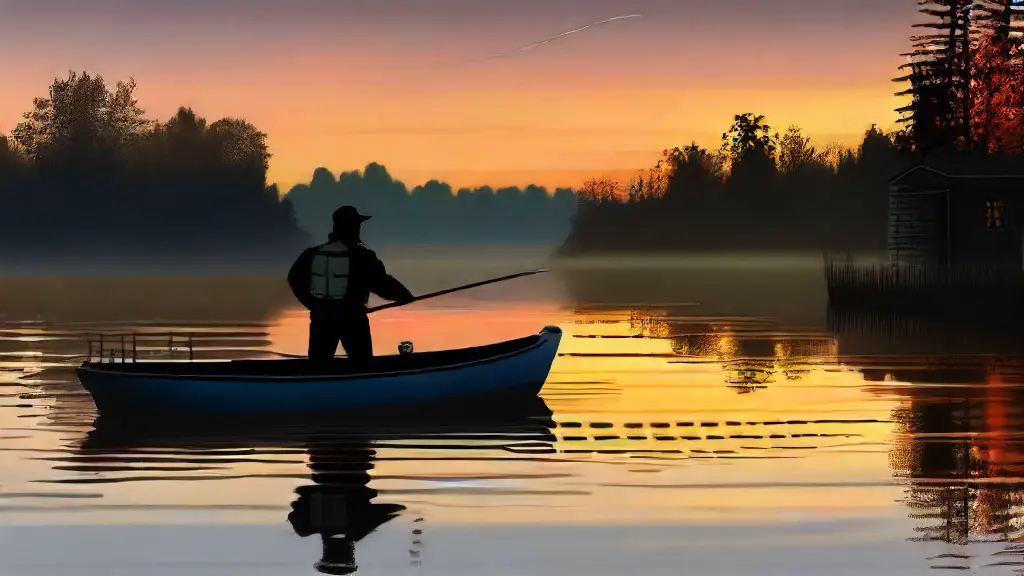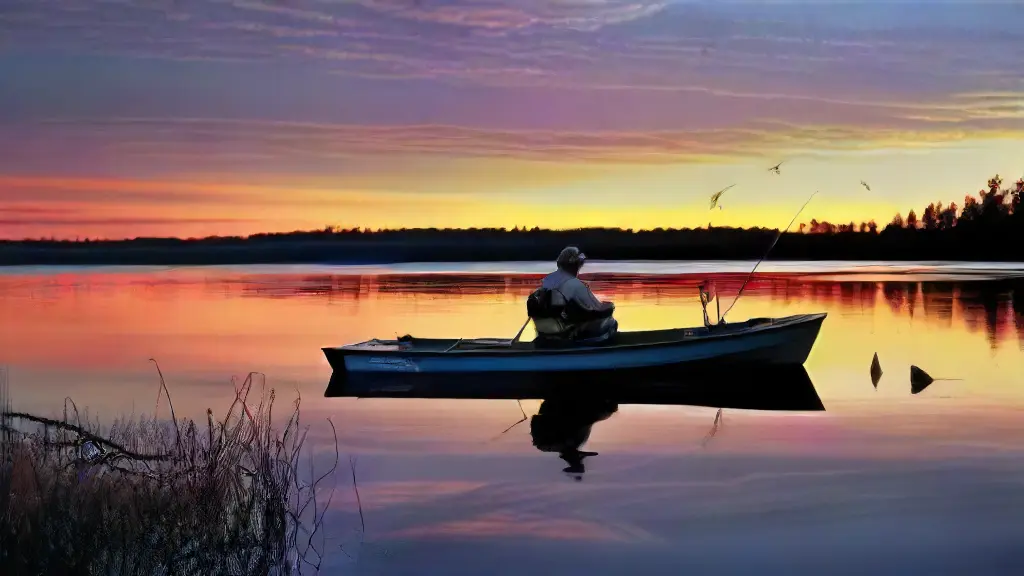How to Land a Muskie

The thrill of reeling in a trophy fish is a feeling like no other, and for many anglers, landing a monster Muskie is the ultimate prize. With its impressive size and strength, catching a Muskie requires a combination of finesse, strategy, and the right equipment.
Every angler dreams of hooking one of these majestic creatures, and with the right techniques and gear, the experience can be both exhilarating and safe for both the fish and the angler.
When a Muskie bites, it’s a thrilling experience that requires careful planning and execution to ensure a safe and successful catch.
Respect the fish’s strength and power, considering they can weigh up to 50 pounds and reach speeds of 15 miles per hour
What is Safe Muskie Landing
As the sun rises over the tranquil lake, anglers eagerly set out to reel in one of the most elusive and prized game fish in the world – the mighty muskie. Beneath the calm surface, the fight is on, and the thrill of the catch is exhilarating.
But little do many anglers realize that the battle is far from over once the fish is on the line.
Safe landing is crucial for optimal release, as it allows the fish to swim away unharmed, reducing the risk of injury or mortality.
In the first part of this series, we’ll explore the importance of gentle handling for safe landing and discuss the role it plays in the catch-and-release process.
The next section will delve into the anatomy of the muskie, highlighting vulnerable areas that require special care during handling. This comprehensive guide will provide anglers with a thorough understanding of the optimal techniques for fishing with a pole in a boat on a lake, whether fishing in shallow or deep water, navigating structure, avoiding weeds, rocks, and submerged aquatic plants, and harnessing the benefits of the surrounding vegetation.

Why Does Muskie Landing Matter
Reeling in a monster muskie can be a thrilling experience, but success hinges on more than just a few lucky casts. In reality, mastering the art of landing these prized catches is crucial for both the angler and the underwater world they inhabit.
Understanding the importance of precise casting in muskie fishing is crucial for increasing the chances of landing one.
Accurate casting allows anglers to present their bait or lure to the fish in a natural and inviting manner, increasing the likelihood of a strike.
Key factors influencing the chances of landing a muskie include factors such as water conditions, structure, cover, and sunken logs that provide potential hiding spots. While anglers often focus on techniques and gear, it’s crucial to remember the fish habitat and ecosystems they rely on for survival.
| Key Factors Influencing Muskie Catching | Importance Level | Why It Matters |
|---|---|---|
| Water Conditions | High | Water clarity, temperature, and flow affect muskie behavior and habitat. |
| Structure and Cover | Medium-High | Submerged logs, sunken logs, and underwater structures provide hiding spots and ambush points for muskies. |
| Accurate Casting | High | Presenting bait or lure in a natural and inviting manner increases the likelihood of a strike. |
What is the Importance of Catch and Release in Muskie Fishing
As I slip into the serene lake’s crystal-clear waters, I’m reminded of the delicate balancing act that exists between fishermen and the majestic muskie. Muskie populations and habitats are under threat due to human activities such as habitat destruction, overfishing, and pollution.
The risks associated with handling and holding these prized fish are significant, as they can lead to injury, exhaustion, and even death.
When improper techniques are employed, it’s not uncommon to witness casualties.
Proper hook removal and handling techniques are crucial to minimize stress and trauma during release. Avoiding the use of mesh bags, which can cause injury, is essential.
How to Use Landing Net Effectively
Catching a glimpse of the sun rising over frozen lakes on a crisp winter morning, I’m reminded of the thrill that comes with ice fishing. The stillness of the early morning hours is a world away from the hustle and bustle of daily life, and the quiet calm of the frozen landscape is a perfect setting for a peaceful day on the ice.
Landing nets are a crucial piece of gear for any angler, whether they’re fishing in the harsh conditions of winter or the warmth of a summer day.
They allow you to safely and humanely handle and transport your catch, while also providing a means to gently guide them into the safety of the boat.
We will explore the ins and outs of using a landing net effectively, from constructing the perfect net to strategies for effective catching and preserving the catch. As the sunrise painted the frozen lakes with hues of pink and orange, constructing the perfect landing while boat fishing, ice fishing, or any other type of fishing in cold weather, warm weather, or any time of day, from dawn to dusk and beyond.
Facts About Landing Nets
- Landing nets are a crucial piece of gear for any angler, providing a means to safely and humanely handle and transport their catch.
- Landing nets allow for gentle guidance of fish into the safety of the boat, reducing stress and injury to both the fish and the angler.
- The perfect landing net is one that is durable, has a comfortable grip, and is the right size for the type of fishing being done.
- Using a landing net effectively requires a combination of skill, patience, and knowledge of the fish being targeted.
What is the Best Way to Handle a Captured Muskie
As the sun rises over the water’s surface, casting a warm glow on the tranquil morning, Muskie fishing is often an exhilarating experience, but handling these impressive fish requires finesse and understanding of their behavior.
I.
Introduction
Safety considerations for handling a captured Muskie start with acknowledging the power and strength of these fish.
Releasing caught fish is crucial to conserve species and maintain a healthy ecosystem.
This section will guide you through the best practices for handling these magnificent predators.
II. Initial Handling Techniques
When initial contact is made, it’s essential to position yourself for safe handling, ensuring a secure grip and avoiding sudden movements.
Using wet hands and a gentle grip will help reduce stress and injury to the fish. Keep the fish in a secure position to prevent thrashing and ensure a smooth release. The marine biologist used the fish identification app to analyze the species caught in the morning, afternoon, evening, and twilight hours, relying on sonar, GPS, and depth finder data to understand the fish anatomy and biology.
Why is the Boat and Shore Fishing Experience Important
In the midst of a serene lake or a tranquil river, lies a world of wonder and excitement, where the thrill of the catch is waiting to be experienced. Freshwater aquatic life is incredibly diverse, with over 10,000 known species of fish inhabiting the world’s rivers, lakes, and streams.
Mastering boat and shore fishing techniques is crucial for anglers seeking to improve their overall fishing skills.
This is because effective fishing techniques rely heavily on understanding fish feeding patterns and the dynamics of the aquatic environment.
For instance, understanding fish nesting habits can help anglers anticipate and target specific fishing spots.
Boat and shore fishing experiences offer a unique opportunity to develop essential skills for successful catching.
Patience, attention to detail, and adaptability are key components of this process. By honing these skills, anglers can increase their chances of successful fishing and contribute to the long-term sustainability of aquatic life.
Facts About Freshwater Aquatic Life
- There are over 10,000 known species of fish inhabiting the world’s rivers, lakes, and streams.
- Mastering boat and shore fishing techniques is crucial for anglers seeking to improve their overall fishing skills.
- Understanding fish feeding patterns and the dynamics of the aquatic environment is essential for effective fishing techniques.
- Developing essential skills such as patience, attention to detail, and adaptability can increase an angler’s chances of successful fishing.
How to Use the Right Fishing Gear for Muskie Landing
Defying the odds of catching a prized muskie requires a deep understanding of the fishing gear that’s essential for a successful landing. Finesse and perseverance are crucial, but the right tools can make all the difference.
Step 1: Choosing the Right Rod and Reel
When it comes to selecting a rod and reel for muskie fishing, there are several key factors to consider.
Rod material and action can greatly impact the performance of your gear. When selecting a lure, it is essential to consider factors such as fish safety, fishing regulations, and fishing guidelines to ensure a successful and responsible fishing experience.
What is the Importance of Fish Habitat and Ecosystems Preservation
The aquatic world is a realm of intricate beauty, where the harmonious coexistence of species has evolved over millions of years. As we venture into this underwater realm, it becomes apparent that the preservation of fish habitats and ecosystems is a matter of utmost importance.
Fishing experiences that prioritize sustainability are crucial in maintaining the health of fish populations and the ecosystems they inhabit.
For instance, responsible fishing methods can help prevent overfishing and protect vulnerable species.
Disruption to the Food Chain: When fish habitats and ecosystems are compromised, the delicate balance of the food chain is disrupted, impacting not only the fish population but also the entire ecosystem.
The loss of biodiversity is also a significant consequence of neglecting fish habitats and ecosystems.
As species are pushed to extinction, it can lead to a breakdown in the natural order of the ecosystem. I’ve updated my knowledge with fishing strategies, fishing methods, fishing styles, fishing experiences, fishing stories, fishing tales, fishing adventures, fishing memories, fish stories, fish tales, fish legends, and fishing folklore.
Fish Habitats and Ecosystems
- Fish populations are declining at a rate of 5% per year due to habitat destruction and overfishing.
- Over 75% of the world’s fisheries are overfished or maximally fished, leading to a decline in fish populations and ecosystem health.
- The loss of biodiversity in fish habitats and ecosystems can lead to a 30% decline in ecosystem resilience and a 50% decline in ecosystem function.
- Responsible fishing practices can increase fish populations by up to 25% and reduce bycatch by up to 80%.
Muskie Lures for Weedy Areas
How to Work Jerkbaits for Muskie


